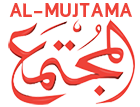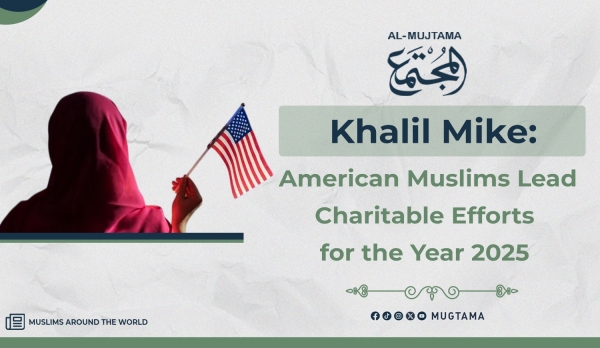"LIFE for Relief and Development" Earns Third Place as Best Global Relief Organization... Featured
Over the past years, American Muslims, numbering approximately 5 million according to estimates by the Council on American-Islamic Relations (CAIR), have contributed to numerous global charitable endeavors. Recent data indicates that the total donations in the past year from Arab Americans reached about $4 billion, directed towards charitable and humanitarian organizations. The giving of American Muslims extends abroad, and the war in Gaza prompted an immediate mobilization by many relief organizations, which collaborated with American non-profit institutions to expand their operations across continents.
According to reports issued for the year 2025, "LIFE for Relief and Development" was ranked as the third best global relief organization, distinguished by its rapid emergency humanitarian response. It also secured the fifth position for the best organization working in Palestine, as well as for its poverty alleviation efforts worldwide.
"Al-Mujtama" magazine contacted Khalil Mike, the Development Director at the organization, and the following interview ensued:
LIFE operates in more than 60 countries. How did it achieve this global reach?
- "LIFE" was established over 32 years ago in the United States of America following the Gulf War. Its initial launch was due to the severe need of those affected by the scale of the war at that time and the limited support from relief organizations in the Middle East back then.
In general, all of LIFE's donors provide their support stemming from their conviction in the necessity of contributing to the development of societies, supporting the needy, and participating in humanitarian initiatives that work to improve the living conditions of the poor and those in need. They also work on effective communication with the Arab world and developing countries in general through the idea of donating with us.
This is in addition to their internal support. Annually, at the beginning of the holiday season, American companies and citizens donate on a day known as "Giving Tuesday," in which we participate within the American society. We work for every needy person regardless of their religion, color, race, gender, and culture; humanity unites us no matter the circumstances.
How did "LIFE" achieve these prestigious international rankings?
- The "LIFE" team has worked diligently over these years, climbing the ladder of success step by step. The evaluation was through rigorous auditing and strict review by the competent authorities. "LIFE" was indeed worthy of obtaining a 96% rating from the international arbitration body (Charity Navigator), and it was recommended by the United States Agency for International Development (USAID). Furthermore, "LIFE" holds consultative status with the United Nations Economic and Social Council.
It earned these rankings because it is characterized by constant preparedness to face global disasters and emergencies, in addition to expansion and outreach through comprehensive implementation projects, via its 14 offices around the world. Through these years, it has distributed more than $624 million in humanitarian aid.
The past two years have witnessed major global crises. How did "LIFE" determine its priorities?
- I cannot deny that during these years, we sometimes felt that all those affected were in urgent need!
For example, the working team in Syria sees that all the people of northern Syria deserve help, and all the victims of Morocco, Turkey, and Libya deserve it, and then we went through a harsh feeling that there are two million displaced people in Gaza who deserve help!
However, we operate with strong planning, and all our projects proceed in parallel. "LIFE" works to provide diverse projects such as food, water, and temporary shelter, in addition to healthcare, education, community development, family assistance, and refugee support programs. It has proven its presence, for example, in the earthquake crisis in Turkey and northern Syria. For the emergency response, cooperation was established with the relevant authorities, and the team was on the ground within just 4 hours of the disaster. It worked to track the displaced people from the earthquake zone to other neighboring states to provide the necessary support, shelter, and medical care for the displaced. The same applied to the disaster in Morocco and Libya last year; all aid was provided even though our team did not know the language of the country!
At the same time, the events in Gaza began, followed immediately by Sudan and Lebanon. Our teams were working day and night effectively to anticipate events and prepare for them. We were present on the first day in Gaza thanks to our team that has been there since 2003, which greatly facilitated our efforts. Thanks to the "LIFE" Jordan team, we were able to cross many borders because our logistical paperwork was completed early, so our trucks were not stuck at the crossings as some other organizations suffered.
The calamities were not only in Gaza last year, but in several countries, resulting in thousands of refugees. How did you deal with this?
- We worked in several countries to support 1.2 million refugees in Syria, Sudan, Burma, Afghanistan, and Pakistan, as well as those affected by previous wars in Iraq, Yemen, Lebanon, Morocco, and other countries.
In Syria, we have been working for 21 years, and recently we focused on the "From Tents to Homes" project, alongside urgent relief and medical aid, which aimed to build 50 residential complexes in the north to address the crisis of displaced people dying in winter. Most of those who received their homes during this period were women, the elderly, and children.
During the Sudan crisis, work was done on urgent aid for those displaced to Egypt and some neighboring countries. We generally worked to provide healthcare for 30,000 refugees, among whom many diseases are prevalent, most notably eye diseases. Approximately $27 million was spent on comprehensive healthcare programs and medical supplies around the world, and vitamin-fortified food was distributed to combat malnutrition for 19,000 families.
How, then, was work carried out in parallel between relief and emergency needs and sustainable projects?
- Work on sustainable projects was proceeding normally, such as drilling wells. However, in the orphans' project, we faced the desire of some donors to allocate their sponsorships only to Gaza. But we, like all credible organizations, explained to them that the situation is catastrophic on the ground, and we as an organization do not know the actual number of orphans registered with us in Gaza; whether they are still alive or not given the enormous number of child deaths. Due to the events, we cannot conduct a census of new orphans. Our team was working on the ground according to the security and logistical conditions, and working for all children according to the most deserving.
Indeed, the donors and sponsors of orphans with "LIFE" understood this matter and understood the magnitude of a sponsor abandoning their orphan as a disaster for that child. Our work continued as it is in the sponsorship project, and we even ended the year 2024 sponsoring 13,100 orphans with all their financial and psychological needs.
During your implementation projects, you focused on psychological support for orphans. How is this done?
- Certainly, the orphaned child, and even their mother and family, need psychological support alongside their material care. The orphan may have experienced sudden loss or even witnessed scenes of fear and pain in addition to the loss, so they need support, emotional release, and coping with post-traumatic stress. We have worked to monitor the cases of "LIFE" orphans and deal with them correctly in cooperation with specialists for this purpose. Our focus with orphans in normal circumstances has been through granting them outings and allowing them to choose their own clothes, and through family-style orphan parties that alleviate the burden on their mothers and families.
Regarding orphans and children of war, such as the situation in Syria, Gaza, and Lebanon, specialists have been appointed to deal with the situation. For example, in educational camps in Gaza, students suffering from learning difficulties or post-traumatic problems were identified, and their cases were well-followed up with their parents. The improvement of many students was noted.
In Syria, some activities were practiced, such as drawing, cooking, learning the art of leadership, and others, which contributed to the emotional release of children, allowing specialists to support them and monitor their situation.
It is also worth mentioning that there were some humanitarian gestures of psychological support provided by "LIFE," such as for cancer patients in Syria, the elderly abandoned by their children in nursing homes in Jordan, patients in hospitals in Sierra Leone, and the displaced between the borders of Pakistan and Afghanistan.
In general, we carefully select our teams to ensure that they distribute and bestow the meanings of mercy and solidarity at the same time as they distribute humanitarian aid!
Why are education support projects linked to orphan support in "LIFE"? And how do you assess the importance of education in developing countries?
- Supporting the education of children is like building an independent, complete society. Therefore, we did not hesitate to spend millions of dollars on education projects and the rehabilitation of schools, as was done this year in Iraq and in Syria, benefiting 187,000 male and female students. Approximately 29,000 orphaned students were returned to their classrooms by providing their expenses and educational needs in 28 countries around the world, in addition to supporting university scholarships.
Are orphan support projects included in seasonal projects?
- Sponsoring orphans includes all aspects of their lives, but some needy children require support for their families during the seasons of Ramadan, Eid, winter, and others. 11 million meals were provided during Ramadan in 36 countries around the world, and 450,000 people in 38 countries around the world benefited from the sacrificial animals (Udhiyah), including 50,000 in Gaza. The organization provided winter supplies of clothing, heaters, firewood, etc., to 9,000 families, and drilled 267 wells during the year in 18 countries.
How did you work on well-drilling projects amidst the disasters that the Middle East was going through?!
- The seasons of goodness in Ramadan, Eid al-Adha, and the end of the year are good seasons in which American Muslims and donors around the world give their Zakat and Sadaqah. We work on planning well-drilling projects, feeding projects, expiation (Kaffarah), vows (Nazar), etc., throughout the year, but donations for them become more active during these seasons. The number of wells drilled by "LIFE" throughout its existence has reached 1473!
"LIFE" is distinguished by working in specific seasons to drill wells in the most needy countries such as Somalia, Sierra Leone, Tanzania, Kenya, Afghanistan, Pakistan, and other countries. We also work to provide drinking water through various types of projects, such as the rehabilitation of water tanks, as was done in Gaza and Iraq, in addition to providing clean drinking water in several countries in shelters and displacement camps.


